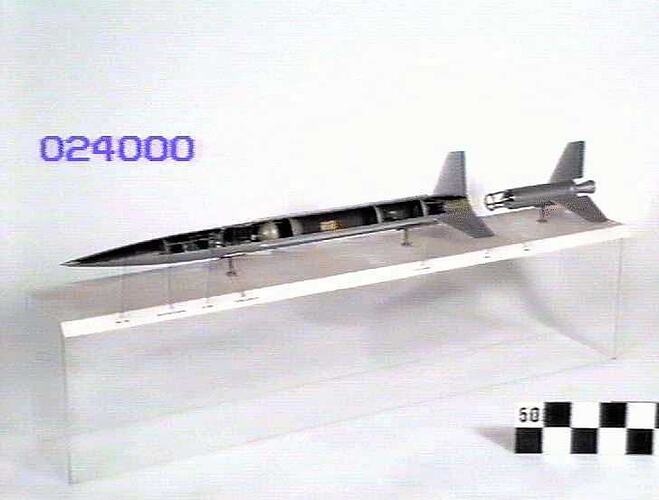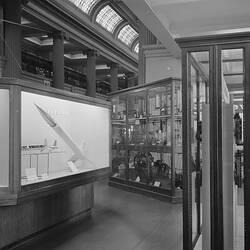Summary
Rocket History
The Aerobee was the first successful high altitude research rocket developed by the United States of America. It combined the solid-propellant booster stage of the US Army Aerojet WAC Corporal rocket with the second-stage of the US Navy Bumblebee rocket. The resulting 'Aerobee' was operated by the US Navy initially as the manager of the US sounding rocket program. Design and development was carried out in 1945-46 at Johns Hopkins University by James Van Allen. Results of experimental testing of captured German V-2 rockets assisted the design of this smaller and more reliable vehicle which was built by Aerojet Engineering and the Douglas Aircraft Corporation. The usual Aerobee payload was 68 kg.
The first launch took place in November 1947 and the design became the standard rocket for US high-altitude testing including a May 1952 experiment using a live payload of two monkeys and two mice which were used to determine physiological reactions for the manned space program. They were recovered by parachute. The Aerobee launch program ceased in 1965 after a total of 226 launches with a failure rate of about 9%.
Model History
This 1:6 scale sectioned model of an Aerobee research rocket was commissioned by the Museum for display purposes and delivered in 1956.
More Information
-
Collecting Areas
-
Acquisition Information
Purchase
-
Modelmaker
-
Classification
-
Category
-
Discipline
-
Type of item
-
Exhibition Collection Management
1150 mm (Length), 200 mm (Width), 180 mm (Height)
-
Overall Dimensions
1140 mm (Length), 220 mm (Width), 180 mm (Depth)
-
Model Scale
1:6
-
Keywords

